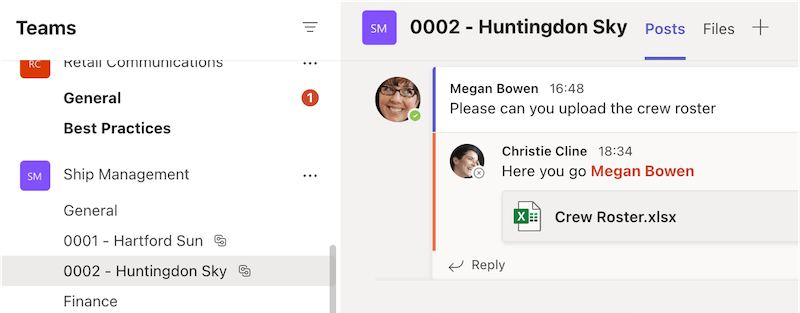Shared Channels in Teams: How will you use them?
In our last post, we outlined how Teams Shared Channels are configured. This included considerations for Azure B2B Direct Connect. In this post, we will explore how organisations plan to use Shared Channels in Microsoft Teams. We have taken feedback from our customers and partners. We can see common trends. In this second post on Shared Channels for Teams, we will share the trends we see.
Recently ProvisionPoint presented in a webinar with our partner Setel. This webinar was on Shared Channels in Microsoft Teams. Joining the webinar were two guest speakers. They explained how they would like to use Shared Channels. Whilst these use cases were somewhat unique to shipping, they did fall into the two primary reasons organisations are considering Shared Channels.
External Project Collaboration
Many organisations are interested in Shared Channels in Teams for collaborating with external organisations. This may be with suppliers, customers or partners. Most likely the Shared Channel will be used for collaborating on some form of project. The benefits are fairly obvious, the Channel is accessible in the Teams client for each member. There is no need for tenant switching and members won’t miss important notifications.
Internal Department Collaboration
The second use case for Shared Channels is something many organisations have not considered. A Shared Channel can be made available to internal users who do not have access to a Team. This is very useful for a team used for finance or HR. In these scenarios, they need to collaborate with multiple departments on certain pieces of information. There could be a Shared Channel for the IT manager, the sales manager and the operations manager. It will reduce the number of Teams that need creating. Further, it will reduce the risk of sensitive information being shared with the wrong users.

Using Shared Channels in Teams
There are of course other use cases for Shared Channels in Teams. It is likely that project collaboration with external parties will drive the interest of many organisations. However, organisations must be careful to consider the additional configuration involved. At ProvisionPoint we feel the internal usage scenarios for shared channels will be as useful for organisations. Shared Channels will break down the barriers between departments and allow more secure collaboration.
There are of course some important considerations when using Shared Channels and in our final post in this series, we explore these in more detail.
